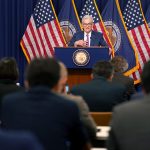President Joe Biden has approved billions of dollars in student loan forgiveness for more than 4.5 million borrowers since taking office, mostly through a patchwork of interrelated reforms and executive actions. The administration also just unveiled a new plan last month that, if enacted, will provide even more relief.
But navigating these programs can be challenging for borrowers. Each federal student loan forgiveness program has its own set of rules and eligibility criteria, many of which overlap with other opportunities. Some forms of loan forgiveness may be automatic, while others require taking certain steps like submitting an application, consolidating loans, changing repayment plans, or even going to court.
Certain characteristics of the borrower or their student debt could be a basis for student loan forgiveness, possibly under a few different programs. Here are some of the big ones.
Time Spent In Repayment Can Qualify For Student Loan Forgiveness
Borrowers who have been in repayment for a very long time can potentially qualify for student loan forgiveness under several initiatives.
President Biden’s one-time IDR Account Adjustment program can credit borrowers retroactively with time toward their 20-year or 25-year loan forgiveness term under income-driven repayment plans. Borrowers who receive enough credit to reach the milestone for forgiveness would get an automatic discharge, while other borrowers would need to switch to an IDR plan to make continuing progress. Those who have Direct federal student loans and government-held FFEL loans can receive the benefits of the account adjustment automatically. But borrowers with commercially-owned FFEL loans must have applied to consolidate those loans via the federal Direct consolidation program by April 30th, 2024.
Borrowers who first entered repayment a long time ago may have another shot at loan forgiveness through Biden’s new mass debt cancellation plan that is currently in the works. The Education Department released draft regulations for this proposed new program last month. This new plan would discharge the federal student debt for undergraduate borrowers who first entered repayment at least 20 years ago, and for graduate school borrowers who entered repayment at least 25 years ago. The new plan is not available yet, but could launch by the fall.
In some cases, borrowers can receive student loan forgiveness sooner than 20 or 25 years. Under Biden’s new SAVE plan, borrowers can qualify for a discharge in as little as 10 years if they originally borrowed $12,000 or less in federal student loans. That timeline increases by one year for every additional $1,000 borrowed. To qualify, borrowers must switch to the SAVE plan if they aren’t already enrolled.
Employment Can Qualify For Student Loan Forgiveness
A borrower’s job can also be a basis for student loan forgiveness, although this typically is in conjunction with time spent in repayment, as well.
Employees of nonprofit or government organizations can potentially qualify for Public Service Loan Forgiveness. The PSLF program can lead to loan forgiveness after 120 qualifying payments, the equivalent of 10 years. The Biden administration implemented two significant “waivers” — the Limited PSLF Waiver, and the IDR Account Adjustment — which temporarily relaxed PSLF rules and expanded access to debt relief. Going forward, PSLF is reverting to stricter rules, although new flexibilities for religious workers, adjunct faculty, and certain contractors are providing new pathways to loan forgiveness under the program.
Separately, the Teacher Loan Forgiveness program can provide up to $17,500 in debt relief after five years of meeting the program’s strict requirements while teaching at an eligible Title I institution. And federal Perkins loans can be eligible for profession-specific cancellation, as well. However, for most borrowers with high federal student debt burdens, PSLF will often be the more valuable program to pursue.
Interest Accrual Could Be Basis For Student Loan Forgiveness Under New Biden Plan
Excessive interest accrual or capitalization is not currently a basis for student loan forgiveness under existing programs. However, Biden hopes to change this with his new debt relief initiative.
Biden’s new plan would eliminate up to $20,000 in interest for all borrowers who have experienced interest accrual or capitalization since entering repayment. Borrowers could receive even higher amounts of loan forgiveness if they are enrolled in the SAVE plan or other IDR programs and make $120,000 or less per year individually or if they file taxes as married-filing-separately, or $240,000 or less per year if they are married and file joint tax returns.
The new student loan forgiveness plan is not available yet. “We will publish a series of proposed rules around these plans in the coming months,” says the Education Department. “Once we have final rules, we will work to implement them as quickly as possible.” Officials have indicated that implementation is expected in the fall.
Hardship As Basis For Student Loan Forgiveness
Currently, there is no administrative discharge or loan forgiveness option for borrowers experiencing hardship. However, borrowers pursuing a bankruptcy discharge of their government-owned federal student debt do have a pathway to relief. New joint policy guidance between the Education Department and the Justice Department allow borrowers to demonstrate that they have an “undue hardship” within the meaning of the bankruptcy code by completing a detailed financial attestation form. This can streamline the process for requesting bankruptcy relief for federal student loan debt, which has historically been an exceptionally challenging process with dismal success rates. Borrowers should consult with a bankruptcy attorney for further guidance.
In addition, Biden’s new student loan forgiveness plan will also provide path to relief based on hardship. The plan would “cancel student debt for borrowers experiencing hardship in their lives that prevent them from paying back their loans now or in the future,” says the Education Department. Officials have not published updated proposed regulations for this prong of relief, but the department is expected to unveil several factors that could suggest hardship such as age, low income, high expenses or debts, and eligibility for other means-tested government relief.
“Borrowers predicted to fall into default on their student loans would be eligible for automatic relief under the Biden Administration’s proposal,” says the department. “Borrowers experiencing other cost burdens could also receive relief through an application process.” Again, the application likely will not be available until this fall.
Disability As Basis For Student Loan Forgiveness
Having a significant medical impairment is already a basis for student loan forgiveness under the Total and Permanent Disability discharge program. The Biden administration recently updated the TPD discharge application to reflect new regulations that went into effect last summer. These new rules expand eligibility for the program, making it easier for borrowers to qualify. They also remove administrative barriers and automate relief in certain cases.
Separately, a borrower’s medical condition and disability status is also expected to be a possible basis for hardship student loan forgiveness under Biden’s new mass debt relief plan.
Attendance At Certain Schools Can Be Grounds For Student Loan Forgiveness
Borrowers who attended certain schools could also receive student loan forgiveness. And there are multiple pathways for this:
- Borrowers may qualify for automatic group relief — without having to request or apply for it — if they attended certain national for-profit college chains. These include Corinthian Colleges, ITT Technical Institutes, and, most recently, the Art Institutes.
- Those who submitted Borrower Defense to Repayment applications by June 2022 and attended one of several dozen approved institutions could get relief under the Sweet v. Cardona settlement.
- Borrowers not covered by automatic group discharges or the Sweet v. Cardona settlement can apply for loan forgiveness through the Borrower Defense to Repayment or Closed School Discharge programs.
- Biden’s new loan forgiveness plan will also provide for automatic discharges for borrowers who attended institutions that lost eligibility to participate in the federal student aid program due to poor student outcomes.
You can learn more about federal student loan forgiveness and discharge programs at StudentAid.gov.
Read the full article here
















